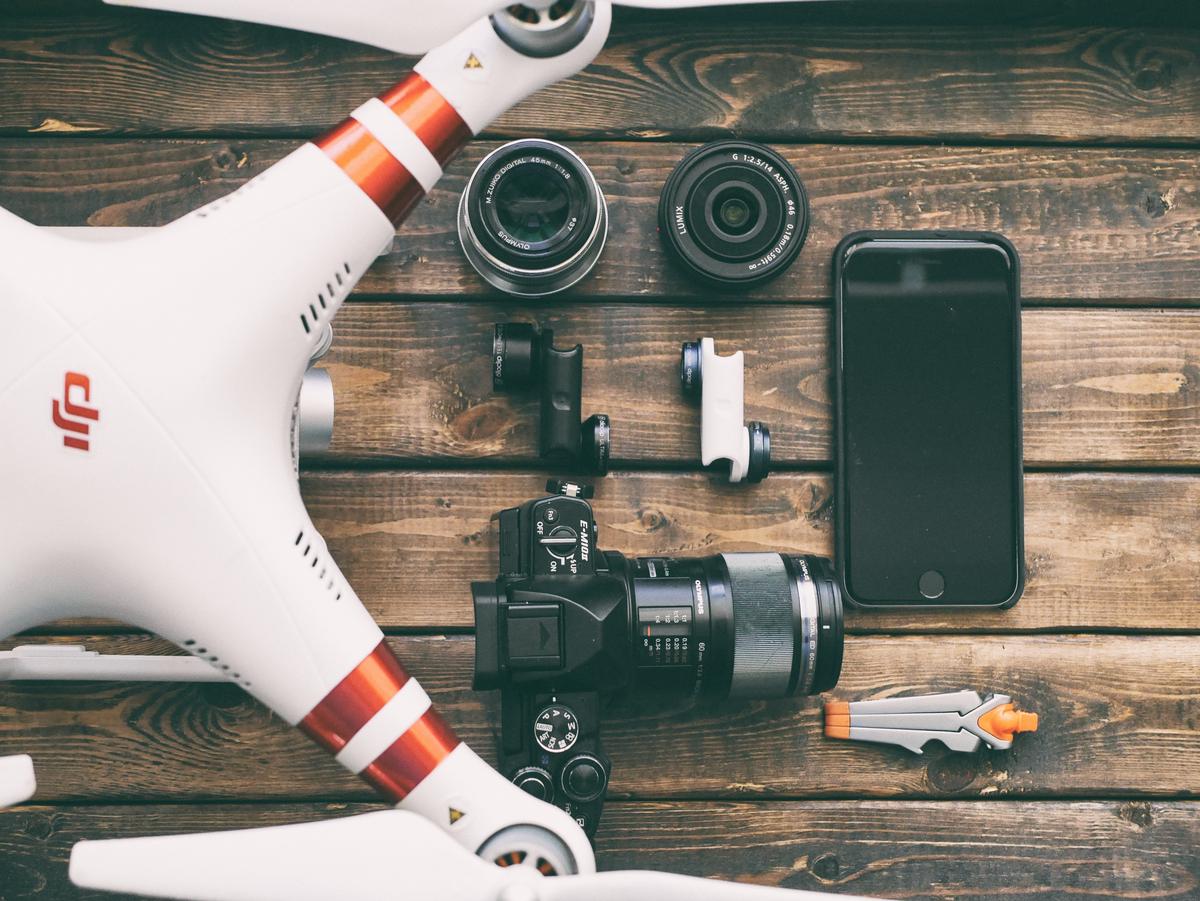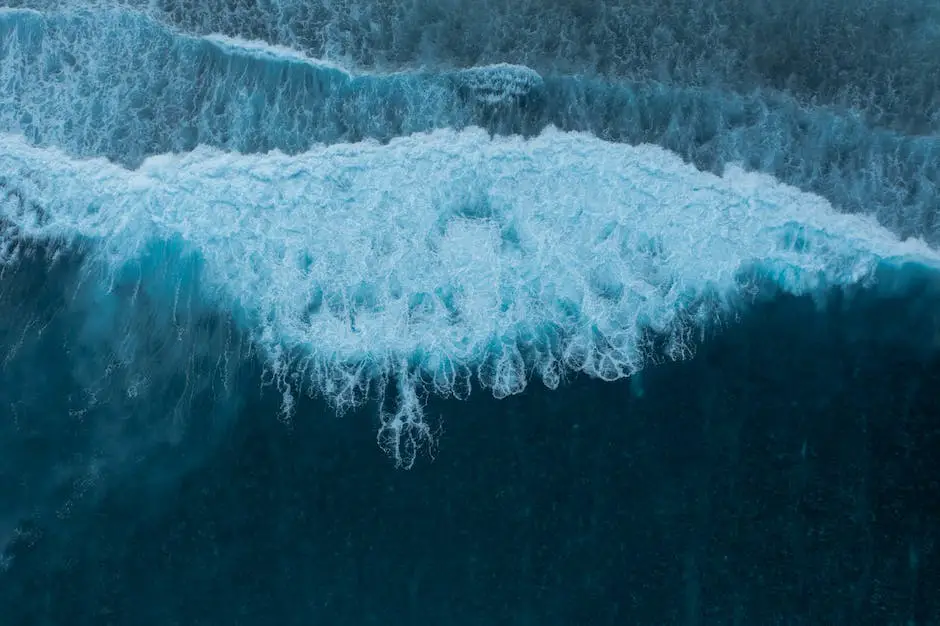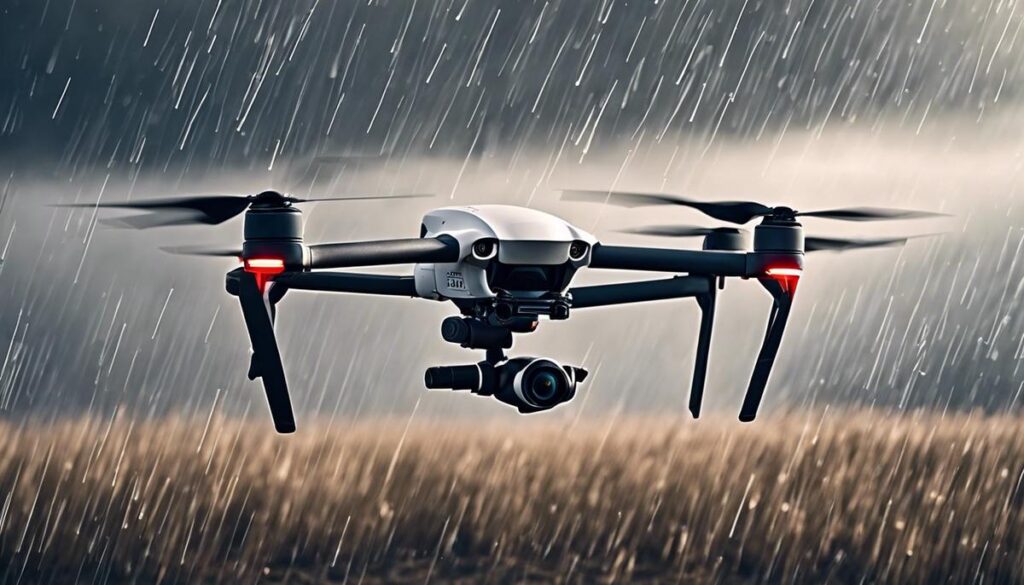Regardless of one’s skills set and knowledge level, every drone enthusiast has at some point contended with the unpredictable force of Mother Nature. The weather is a deciding factor in drone performance, dictating both when and how they can be utilized. That’s why drone manufacturers like DJI have invested heavily in introducing weather-resistant features in their devices, aiming to offer users greater flexibility and durability in varying weather conditions. In this exploration, we aim to shed light on the various technological and practical aspects of weather resistance in DJI drones. From dissecting the concept of weather resistance, reviewing popular DJI models, analyzing the underpinning technology, to providing hands-on advice for flying in different climatic conditions, we cover it all.
Understanding Drone Weather Resistance
Weather resistance is an essential factor in the realm of drones, particularly when it comes to leading manufacturers like DJI. But what exactly does this term mean, and how does it impact drone performance? Let’s delve into this topic.
In the simplest terms, weather resistance for DJI drones means that they are built to withstand variants in weather conditions. It entails that the drones have the capacity to operate effectively even in less-than-optimal weather conditions such as light rain, snow, or dusty environs. However, it’s important to clarify that weather resistant is not the same as being waterproof or weatherproof.
To further clarify, let’s break down what each term means. Devices that are weatherproof and waterproof are completely impervious to water or moisture intrusion, which means they can literally be submerged in water without suffering any damage. Weather-resistant devices, on the other hand, offer some level of protection against weather or environmental elements but cannot be submerged or directly exposed to excessive amounts of water.
In their specifications, DJI doesn’t claim its drones to be weatherproof, which means that steady precipitation, a heavy snowfall, or high winds aren’t ideal for your drone’s flight. The drones are instead designed to handle lighter weather conditions effectively. In most cases, this refers to light rain or snow, and wind speeds up to a specific limit, usually stated in the drone’s spec sheet.
It’s also worth noting that weather resistance extends not only to the drone itself but also to its accessories. This includes batteries, controllers, or any parts that might be exposed to the elements during a flight.
With most DJI drone models, there are built-in safeguards against flying in risky weather conditions. Via DJI’s app or software, the drone will present warnings or outright refusal to take off when weather conditions are regarded as detrimental. If ignored, not only does this jeopardise the flight, but it can also void the product’s warranty.
To sum up, being weather resistant means a DJI drone is tough, but not invincible. While it can take on the elements to a degree, pushing it against its limits is not recommended. Respecting these limitations will not merely extend the life of your drone but also ensure safe and rewarding flights.

Review of DJI Drone Models and Their Weather Resistance
Weather resistance across different DJI drone models is a crucial consideration for those who plan to fly in diverse climates and conditions. This includes enthusiasts capturing stunning landscapes, professionals deploying drones for commercial use, or adventure seekers using drones for their thrilling activities. Different DJI drone models showcase unique levels of weather resistance, though none are entirely waterproof or weatherproof.
Let’s steer our attention to some iconic models in the DJI drone lineup for a comparative perspective.
The DJI Spark, a compact, affordable, yet powerful model, offers a moderate level of weather resistance. It stands up commendably against light drizzles and mild gusts but is not designed to endure heavy rain or turbulent winds.
Transition to the DJI Phantom series, among DJI’s oldest and most esteemed drone lines. With its robust features, these drones reveal a considerably heightened degree of weather resistance, designed to fly stably in winds up to 22 mph. Nevertheless, persistent rainfall or severe weather fluctuations can still pose a threat and potentially damage the device.
Circling towards the DJI Mavic series, another popular choice for drone enthusiasts. The weather resistance capabilities get bumped up even more. DJI Mavic 2 Pro and Mavic 2 Zoom, for example, can withstand wind speeds of up to 29 mph, enduring more challenging weather conditions than their predecessor models. However, similar to the Spark and Phantom series, they are not designed to cope with rain and should not be flown in a downpour.
Lasty, the DJI Inspire series, conceived for serious professional use, depict a high level of weather resistance. For instance, the Inspire 2 can contend with modest rainfall and freezing temperatures as low as -4°F, something rarely seen in consumer drones.
In short, weather resistance capabilities vary considerably across DJI drone models, each formulated keeping specific user needs in mind. From the Spark’s light weather resistance to the Inspire series’ high-end resilience, there’s a spectrum to choose from, with the cautionary note of respecting each model’s limitations. Ignoring these might not only jeopardize drone longevity, but it could also pose safety risks. Be it a slight drizzle or a foolhardy gust, ensure to fly with caution, respecting the thresholds of your drone model.
Always remember, a little wisdom can go a long way in helping you capture those breathtaking shots without compromising your drone’s well-being.

Technologies Behind DJI’s Weather Resistance
Technology and Innovation: The Backbone of DJI’s Weather-Resistant Drones
A deep dive into the technology and innovation behind DJI’s weather-resistant drones reveals some incredible engineering and design principles. Safety, performance, and drone longevity shape these advancements, highlighting DJI’s commitment to providing high-quality equipment for drone enthusiasts.
One critical feature is the drone’s robust casing, engineered with advanced composite materials. This hardy shell enhances the drone’s resistance to weather, blocking entry of elements like dust and rain. Its design effectively reduces the risk of component damage, directly impacting the drone’s lifespan.
The propellers, the drone’s most vulnerable part, leverage innovative designs to withstand harsh condition. The structure ensures stability, with quick-release mechanisms that allow for quick replacement if affected by weather conditions – an efficient solution that smartly blends technological prowess with user practicality.
The drones adopt advanced battery technology, housing it within insulated compartments. This safeguards the drone’s power supply from extreme temperatures, whether sweltering or freezing. Battery performance, thus, remains unaffected, and the drone can function in diverse weather scenarios.
DJI uses gimbal technology to protect the camera and other intricate components. The gimbals pivot smoothly, maintaining the camera’s stability despite adverse weather. Protective casing for gimbals further shields against dust and water, safeguarding the quality of captures.
Along with these, DJI implements electronic speed controllers (ESCs) into their drone design. An ESC adjusts the drone’s speed, reacting to weather changes influencing drone movement. This gives the operator more control, enhancing the drone’s maneuverability and safety in different weather conditions.
Software-implemented safety features are important too. From GPS to obstacle avoidance sensors, DJI’s weather-resistant drones wield a suite of protective technologies. These aid the drone in navigating and avoiding potential hazards. Additionally, return to home (RTH) functionality ensures the drone returns to its take-off point if weather conditions become too severe while in flight.
While weather resistance is an invaluable feature, it’s essential for drone operators to acknowledge the limitations. No drone is invincible. Constant exposure to harsh weather can harm a drone’s components over time, cutting short its lifespan. But with due care, and the intelligent use of DJI’s resilience against diverse weather conditions, their drones enable the freedom to capture stunning visuals, creating a rewarding user experience.
These innovations and tech applications aren’t just about shielding a drone from the weather. Rather, they’re about harnessing the power of technology to elevate performance, regardless of conditions. In the balance of practicality and art, DJI’s weather-resistant drones certainly pave the way, redefining the dynamics of drone technology.

Photo by aaronburden on Unsplash
Practical Guidance on Using DJI Drones in Different Weather
Taking control of the sky as a drone enthusiast demands an understanding of the menaces that extreme weather conditions pose to the drone operating experience. With most drone users historically grounded due to a lack of weather resistance available in earlier models, DJI has hastened the pace of innovation to provide advanced weather-resistant drones that can be flown regardless of the forecast. Beyond simply having the right drone model though, smart safety practices and understanding how to fine-tune drone settings for adverse weather are essential to enjoy a limitless flying experience.
For DJI drones, customization is key. All DJI drones are equipped with adaptable settings, allowing users to modify device operation according to specific weather conditions. For instance, when flying in cool conditions, slightly adjusting the ‘Gain’ will ensure height is maintained without unnecessary drifting. On the other hand, the ‘Brake’ setting can be increased when dealing with high wind conditions to maintain stability. While users must note that such adjustments might limit a drone’s responsiveness, this trade-off is necessary to ensure maximum safety and control over the drone in adverse weather.
One cannot underestimate the importance of firmware updates in maximizing weather resistance capabilities. Just like any tech device, regular updates fortify the drone’s system, introducing enhanced features and improvements to help the drone adapt to varying weather conditions. Always ensuring the DJI drone is running the latest firmware is fundamental to achieving best performance.
For users operating in extreme locations like the seashore or snowy landscapes, some steps can be taken to fortify the drone against corrosion or freezing. Corrosive salt can be a deadly foe to electronic equipment, hence, extra measures like adding silicone guards to vulnerable parts of the drone and frequent thorough cleanings are effective means to preserve drone integrity in such conditions. For cold environments, using battery insulation jackets will keep the battery warm and extend flight time.
Taking time to do a quick pre-flight check is a time-tested trick that applies as much to drone flying as it is does to conventional manned aviation. Even the slightest physical damages like cracks or breaks can be fatal for drone flight, and especially so under challenging weather. Regular pre-flight checks keep your drone flying longer and safer.
In low light conditions, utilizing the drone’s equipped high-performance camera is highly recommended. Most DJI drones come with a powerful camera that can capture detailed images even in low light. Adjusting camera settings according to the conditions at hand can allow one to capture amazing shots without compromising their drone’s flight stability.
Despite the technological advancements making drone flying an all-weather endeavor, the ultimate component in a satisfying flying experience is always the pilot. The pilot must know when to be patient and not force a flight when conditions are too risky. Following these best practices and respecting the weather resistance recommendations from DJI can make flying in different weather conditions fun, safe, and fruitful, allowing your DJI drone to truly test the bounds of the atmosphere. Fly smart!

Given the increasing popularity and myriad applications of drones, weather resistance is a critical factor to consider. Drone operators, beginners or experts, will likely face various weather conditions and understanding the level of protection against elements like rain, wind, and dust is paramount. Resilience to these elements not only impacts the performance and longevity of DJI drones but also influences their functionality and utility. By exploring the depth of DJI’s weather-resistant technology and familiarising ourselves with how to operate these drones in diverse weather conditions, we can truly harness the full potential of these aerial devices, regardless of the weather. This knowledge base extends our capacity to use these cutting-edge devices more efficiently, safely, and innovatively.
Originally posted 2024-01-10 01:09:08.




